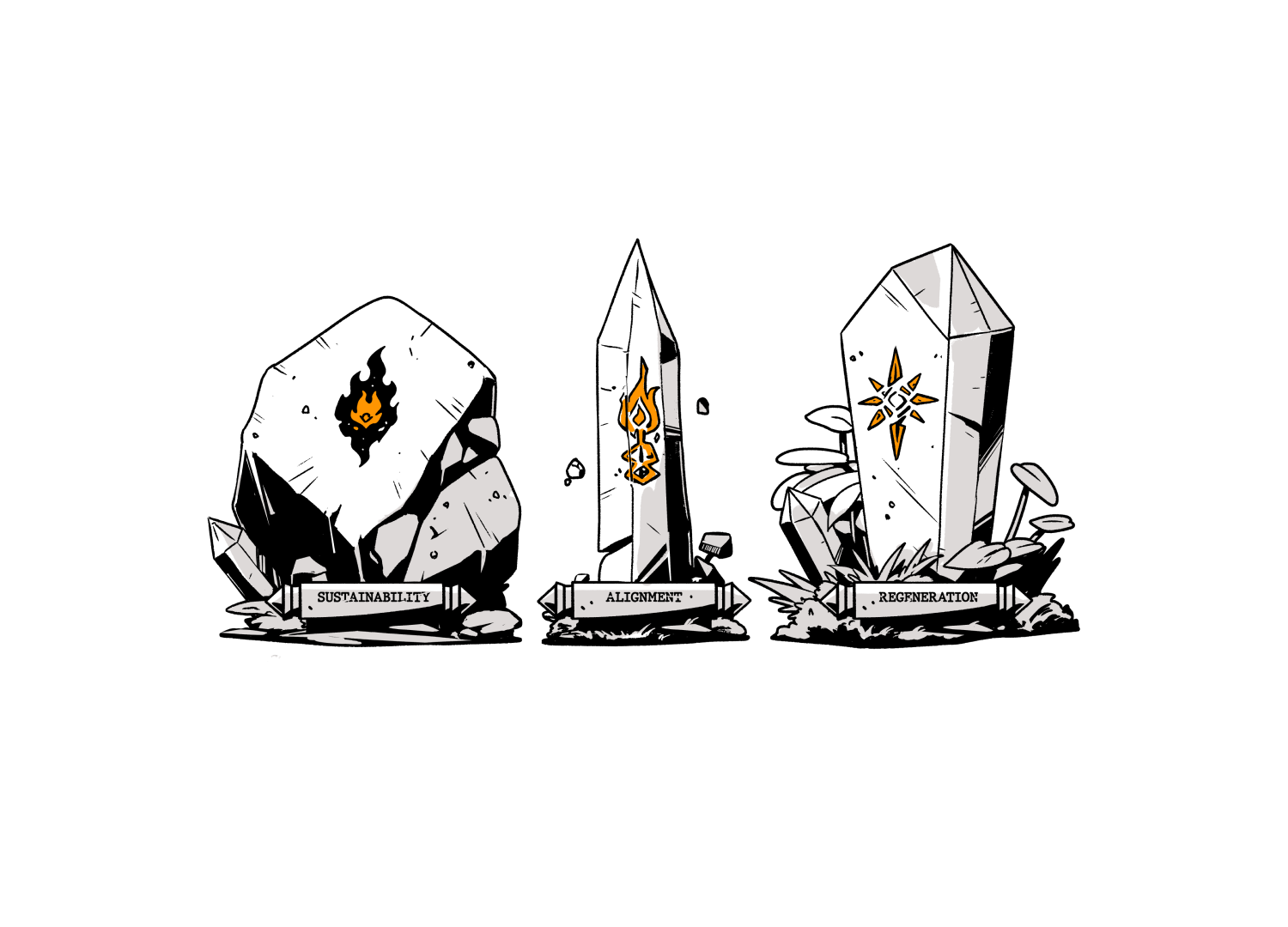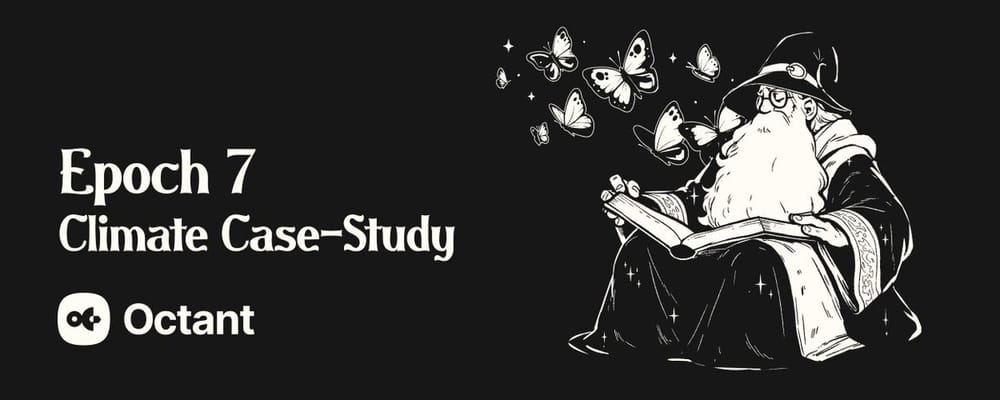Article written by Benjamin Siegel. With thanks to Julian Zawistowski, James Kiernan, Artem B., Nico Gallardo 🫡, Andrzej Regulski, and Mashal Waqar for their feedback.
The words “Ethereum Alignment” keep being thrown around in conversations in our industry of late. And while its easy to say you’re ETH-aligned in theory, how can you actually prove it? In this article, we’ll define what it means and how ecosystems can prove their alignment through action.
Ethereum Alignment is not just about signalling but working towards shared values with Ethereum’s technology and community.
One of the core building blocks of the Octant Protocol and what we consider the most powerful part of we’re building in Octant, is enabling Ethereum alignment, through the Ethereum Sustainability Fund (ESF). The ESF will focus on sustainable, long-term development, and funding of Ethereum.
What is the Ethereum Sustainability Fund (ESF), and how does it work?
A Dragon is a capital provider, a crypto projects or a decentralized community with a substantial treasury or native ERC-20 tokens.
Every Dragon using Octant to fund their own ecosystem will be generating yield in some capacity. While they may point 95% towards their ecosystems or operational costs, they will be required to point a minimum of 5% of their yield towards the ESF.
The ESF at its core is a funding pool where all of the Dragons using Octant work together to define and fund Ethereum projects that everyone benefits from.
The ESF is designed to be sustainable: by leveraging yield bearing strategies and other revenue streams, to maintain consistent funding, without drawing down Dragon treasuries or principal capital. This allows the ESF to act as an unrestricted endowment fund, through contributions used to fund Ethereum and its core dependencies.
These contributions can be denominated in any asset approved by Octant Governance and can come from external account donations or yield contributions from Dragon Vaults (DeFi yield generating vaults to fund ecosystems).
The ESF’s first Dragon, Golem Foundation, will be pointing between 35% to 50% of their returns on over $100,000,000 worth of principal staked, to secure the security of the Ethereum Network.
We have a saying at Octant (well, plenty of other folks across the world say it, to be fair) - put your money where your mouth is.
Saying you are Ethereum Aligned is one thing, using Octant & the ESF is a way of proving it through funds.
What makes a project Ethereum-aligned and how can projects qualify for ESF Funding?
That is a million (billion) dollar question! While there will be lots of varying opinions on this, we’re keeping it simple to begin with.
Epoch 8 and 9 are our attempts at answering this question through having Ethereum-aligned themes. These insights will be used by the Dragon Council for ESF governance.
Our initial idea is for the criteria to be any project that positively benefits the Ethereum ecosystem and all actors building on Ethereum.
Projects that can reasonably be assumed to primarily pump the bags of, or in any other way primarily benefit, one sub-ecosystem, or specific L2, without benefitting Ethereum, will be excluded from ESF funding.
How will the ESF be governed?
There is quite a bit of governance involved since the ESF is a funding pot continuously maintained and participated in by Dragons.
Each Dragon will be continuously rewarded with governance rights in relation to the percent of the value they have provided to the ESF.
The formula for the assignment of governance rights hasn’t been finalized but we’re currently exploring linear, and non-linear options.
The Dragon Council’s ESF responsibilities
Collectively, the group of Dragons governing the ESF is referred to as the “Dragon Council.”
The Dragon Council also has governance rights and responsibilities towards other facets of the Octant v2 Protocol, including Protocol Upgrades & the OCT Basket. For this article though we’re going to solely focus on their governance of the ESF.
When it comes to the ESF, the Dragon Council has a very defined set of responsibilities. These include but aren’t limited to:
- Setting parameters around the maximum matching funds for each ESF funding round
- Deciding on the frequency of funding rounds
- Eligibility criteria for projects to join ESF rounds
- Initiating Allocation Bond Buybacks, a mechanism to reward funding participants
- Defining the value of each Buyback event.
While the Dragon Council sets the parameters for the use of the ESF funds, under no circumstances do they manage or run the operations for any of the ESF rounds.
Who runs the operations of ESF rounds? Milton.
The management of all ESF rounds will done by the ESF Operator, whom we have lovingly decided to call the Milton. This actor is responsible for all decision making and operations within the confines of the parameters defined by the Dragon Council.
The Milton is elected by the Dragon Council to operate for a set period of time and given an allotted budget from the ESF. It is then up to the Milton to decide how this budget is spent out via ESF rounds.
Explicitly, the Milton has control over the types of Allocation Mechanisms the ESF uses during their Miltonship, as well as all the timelines and operational aspects of ESF rounds during their tenure.
This isn’t to say that once elected the Miltons exist outside the influence of the Dragon Council - rather that the interactions resolve to soft consensus while limiting the hard power of the Milton to a pre-determined set of parameters.
The Milton can and should engage with the Dragon Council and Regens Community during their Miltonship, with the goal of aggregating key opinions and advice on how to best deploy their allotted ESF funding for advancing Ethereum Development and ecosystem-wide ETH Alignment. This isn’t mandatory though. Maybe the active Milton disagrees with the Dragon Council opinion on how funding should be deployed at a certain point in time. That Milton has complete power to unilaterally decide the how and what they fund, but are limited to a predetermined amount of funding and time with which they have to work. They also do not determine the actual allocation of capital because that power is reserved for the Regens (more on this later). At the end of their term the Miltonship will automatically be surrendered and a new Milton will be elected or algorithmically appointed in the future.
There are some open-ended questions about the Milton, and its role in ESF decision-making that we are working through. Questions like who or what is eligible for the pool of possible Miltons? What is the feedback loop between Dragons & community members to define and elect/choose the Milton? What KYC mechanism do we use to mitigate governance attacks and ensure that the Milton is a trusted actor?
All of these are questions we will continue to explore and experiment with as we role out Octant v2. It is reasonable to assume that at the early stages of our path to decentralization, the new Octant Labs entity and the Golem Foundation will have an outsized role in selecting and managing the initial set of Miltons.
The final component of ESF governance is the community, primarily the Regens. Any Regen or Dragon Community member who participates in a Dragon’s Regen Vaults will have the ability to participate as a contributor in ESF rounds.
The ESF is designed to be the funding layer of Ethereum Alignment.
We’ve designed the ESF to become an integral part of defining and building Ethereum Alignment. The ESF provides the ecosystem with tools pre-defined to aggregate both capital and ecosystem sentiment and turn that directly into sustainable funding for the ongoing development and growth of Ethereum.
The ESF will also come with a ready-made governance & funding operating system. This will ensure we limit bureaucratic overhead in Ethereum’s governance, while still empowering the ecosystem to have a direct say in what it means to be Ethereum Aligned.
Disclaimer: This is not financial or tax advice. Octant content is strictly educational and is not investment advice or a solicitation to buy or sell any assets or to make any financial decisions. This article is not tax advice. Do your own research.



